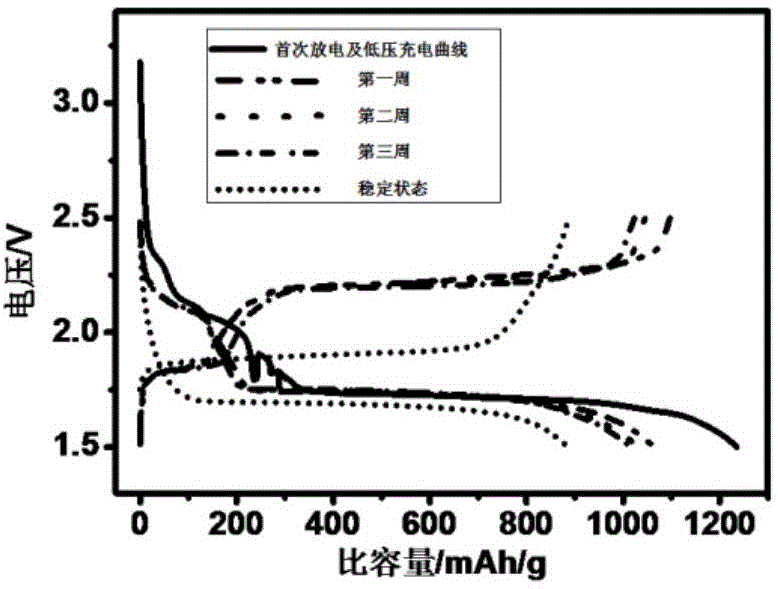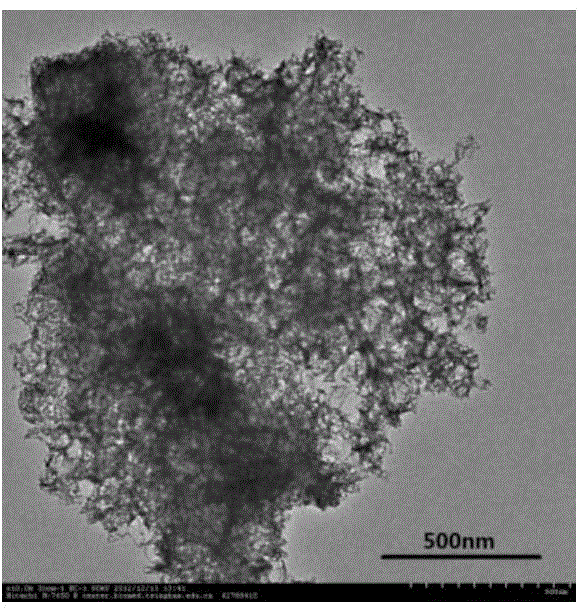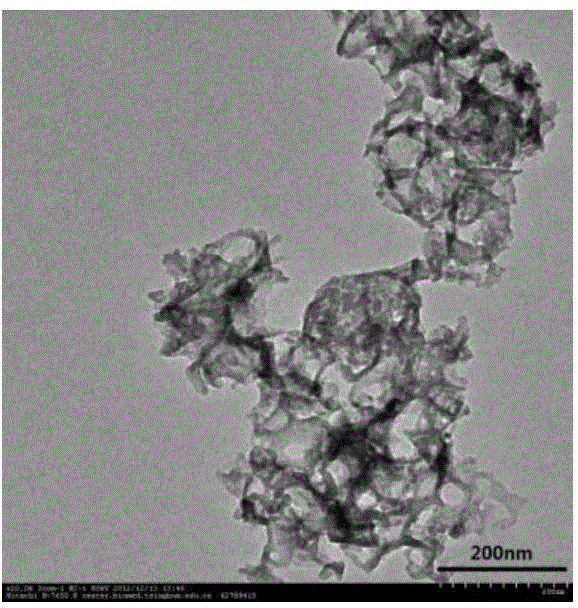Manufacturing method for long-life lithium sulfur battery positive electrode
A cathode material and lithium ion technology, which is applied in the field of preparation of cathode materials for lithium-sulfur batteries, can solve the problems of weak chemical adsorption, low Coulomb efficiency, complicated operation, etc., so as to reduce the self-discharge effect, improve the cycle performance, and simplify the operation. Effect
- Summary
- Abstract
- Description
- Claims
- Application Information
AI Technical Summary
Problems solved by technology
Method used
Image
Examples
preparation example Construction
[0129] According to the fifth and sixth aspects of the present invention, there is provided a method for preparing the above-mentioned porous carbon with hierarchical pores, the method comprising the following steps:
[0130] Step (1-1), by weight ratio is primary template particle: secondary template particle: carbon source compound = 1: (1~3): (2~5) Weigh primary template particle, secondary template particle and The carbon source compound is thoroughly mixed evenly to prepare a mixture.
[0131] The present invention starts from the carbon source compound, doping primary template particles and secondary template particles that can be removed by acid and / or alkali in the carbon source compound, so that the template particles can be uniformly doped in the high temperature carbonization process In the carbon skeleton, the carbon source compound is formed into a carbonized product through high-temperature carbonization, and the primary template particles and secondary template ...
Embodiment 1
[0199] Embodiment 1 has the preparation of the porous carbon of hierarchical hole
[0200] (1) Weigh 6g of nano-Al according to the mass ratio of 1:2:3 2 o 3 , 12gCaCO 3 Dissolve 18g of sucrose in water, stir evenly with a magnetic force, keep warm in an 80°C oil bath until the solvent water in the system evaporates to dryness, remove the magnet, transfer the system to an oven, place at 180°C for 12h, grind the sample, and prepare a mixture;
[0201] (2) the mixture prepared in step 1 is placed in a tube furnace, 2 / Ar(5:95) flowing atmosphere protection (flow rate 50ml / min), carbonization at 900°C for 8h, natural cooling, and the carbonization product was obtained;
[0202] (3) Place the carbonized product prepared in step 2 in hydrochloric acid (4.5mol / L) and stir for 12h, remove the template CaCO 3 After washing, the product was placed in 10mol / L NaOH solution and refluxed at 85°C for 24h to remove the template Al 2 o 3 , and then centrifuged, washed, and dried to o...
Embodiment 2
[0203] Example 2 Preparation of porous carbon with hierarchical pores with modified surface
[0204] (4) Place the porous carbon matrix prepared in step 3 in an appropriate amount of concentrated nitric acid, reflux at 50°C for 8 hours, centrifuge to remove the liquid phase substances, wash with deionized water, soak in concentrated ammonia water for 12 hours, and then A porous carbon material with hierarchical pores can be obtained by washing and vacuum drying, which is denoted as C-NH 4 .
PUM
| Property | Measurement | Unit |
|---|---|---|
| Particle size | aaaaa | aaaaa |
| Capacitance | aaaaa | aaaaa |
| Specific surface area | aaaaa | aaaaa |
Abstract
Description
Claims
Application Information
 Login to View More
Login to View More - R&D
- Intellectual Property
- Life Sciences
- Materials
- Tech Scout
- Unparalleled Data Quality
- Higher Quality Content
- 60% Fewer Hallucinations
Browse by: Latest US Patents, China's latest patents, Technical Efficacy Thesaurus, Application Domain, Technology Topic, Popular Technical Reports.
© 2025 PatSnap. All rights reserved.Legal|Privacy policy|Modern Slavery Act Transparency Statement|Sitemap|About US| Contact US: help@patsnap.com



